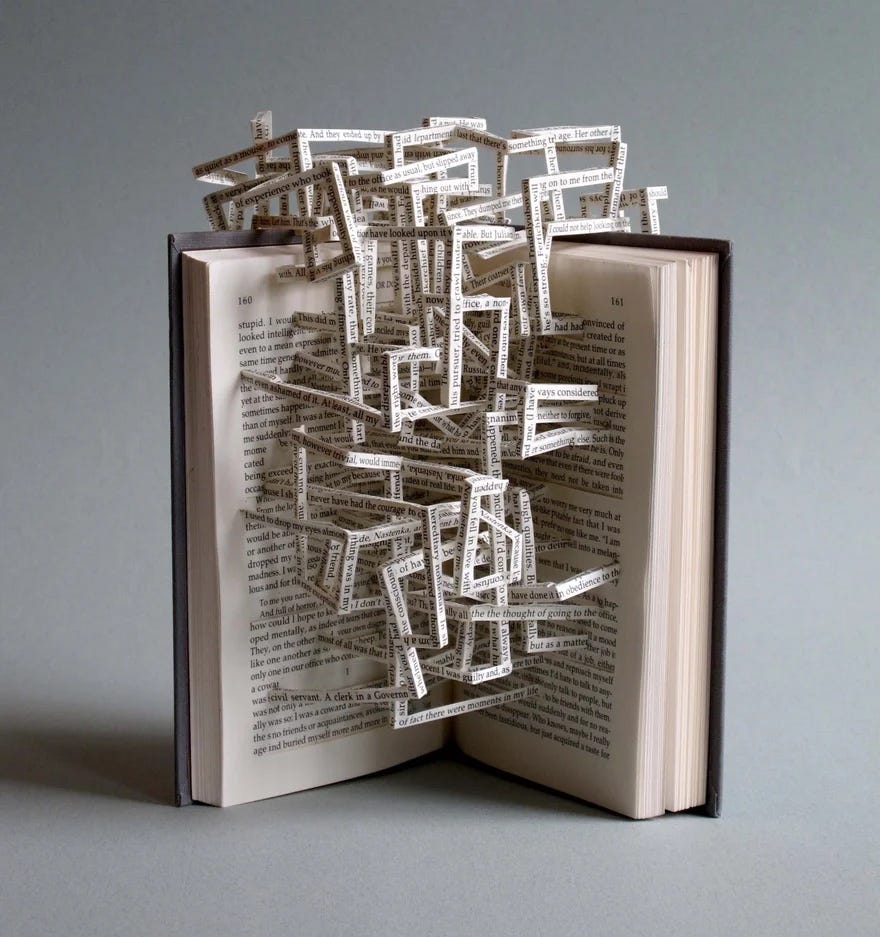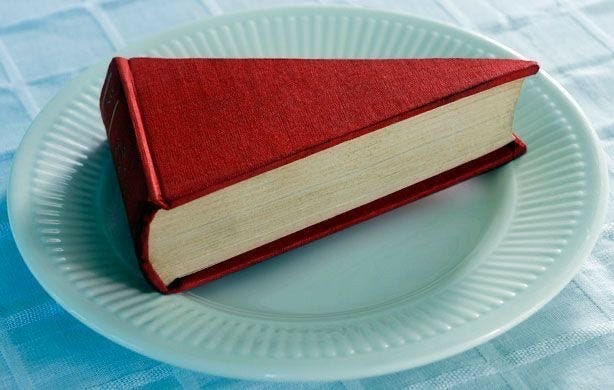It’s a Full Moon, my monthly deep dive on a theme along with 7 sensory recommendations to further explore that topic. You can also listen to an audio recording of the essay (up top).
In the past month, I’ve traveled from Seoul to London, from the 15th century to the 1980s. I spent time with a Tasmanian adventurer, the daughter of a famed writer, an indie rocker in grief, and nuns in the Sahara.
This is what books can do, better than any other mode of transportation: take us places. Within the pages, we can leave the confines of our home, cross the borders of our nations. We can time-travel to periods before our birth and beyond our death.
As a kid, I could spend entire afternoons engrossed in a book. I would read-walk when my mother and I had to run errands. I was never bored at a party filled with adults, as long as I had a book. They weren’t just companions, they were friends.
I use the past tense but the truth is my relationship with books hasn’t really changed . I may not have as much time to dedicate to them, but books remain one of my most cherished relationships. Unlike watching TV, there’s never a tinge of guilt when I read a book. It is always time well-spent.
In fact screens and pages often have opposing effects on my mind and body. I notice how scrolling on my phone for half an hour makes me agitated, anxious and dissatisfied. Whereas if I spend the same amount of time flipping pages, I feel serene, contemplative, inspired. It doesn’t matter what the content is: the effect comes from the delivery medium. This might explain why I’ve never read a book on a Kindle or other electronic device.
This is what books can do, better than any other mode of transportation: take us places.
Books have been my school of thought, beliefs, and aspirations. As a writer, I’ve learned more from reading than any class, workshop, or expert advice. Every book feels like a crash course in rhythm, style, and structure.
Books have not only enabled me to write, but have also offered expansive perspectives – often changing the way I think about people and the world around me. They’ve been a source of education, as much as they’ve provided imaginative escapes.
That escapism can be for entertainment purposes, but it can also play a more vital role: freeing us from difficult life circumstances. I recently learned – in a book by Olivia Laing – that when Malcolm X was imprisoned as a teenager, books provided not only solace but a new dimension to life.
In ‘Everybody: a Book about Freedom,’ Olivia Laing writes: “He gained a vocabulary by the simple expedient of copying out the dictionary in its entirety, though at first he was so unaccustomed to writing that he could barely scrawl the letters. A page each day, each new word unlocking another portion of the world, until he had two hundred thousand of them and for the first time felt truly emancipated by knowledge. Now the books he borrowed made sense. He no longer needed to skim or skip or guess. He read constantly, insatiably.”
After that, he was able to dive into the complex works of Kant, Schopenhauer, Nietzsche, Mendel, W.E.B Du Bois, etc. Two decades later, Malcolm X wrote in his famous autobiography: “Months passed without my even thinking about being imprisoned. In fact, up to then, I never had been so truly free in my life.”
Books have that kind of power: to deliver knowledge and to free us, even when our bodies are confined or brutalized. For that reason, it’s perhaps not surprising that books are one of the first items to be targeted under dictatorships. They get banned, buried or burnt. The wings of knowledge and free-thinking must be clipped in order to control a population.
But despite restrictions, books find a way to reach their readers. Whether their text is planted in the vegetable patch of a prison (Nelson Mandela’s memoir), or hidden in the floor boards of an attic (Anne Frank’s diary), or slipped into music sheets (George Orwell’s 1984, smuggled into Poland) – important stories can’t be held back.
It’s easy to doubt or dismiss whether books can change individual minds and collective systems. But there’s countless examples in which books have changed the course of history. In the 1980s, the circulation of banned books in Eastern Europe was largely responsible for the dissolution of the Soviet Union.
Books have that kind of power: to deliver knowledge and to free us, even when our bodies are confined or brutalized.
As Adam Michnik, a leading Polish dissident, put it: “It was books that were victorious in the fight. A book is like a reservoir of freedom, of independent thought, a reservoir of human dignity. A book was like fresh air. We should build a monument to books … they allowed us to survive and not go mad.”
A book doesn’t need to start a political revolution in order to be vital. Books play various roles in our life, whether it’s teaching us about the natural world, guiding us to learn a new skill, connecting us to our shared interior lives, or shaping our childhood dreams.
For this month’s Full Moon, I offer you seven ways to explore books through our senses: SEE, HEAR, SMELL, TASTE, TOUCH, BALANCE and ENVISION.
In Joy,
Sabrina
PS: Next week, I’ll share the list of books I read this summer — including one of my favorites in recent years.
SEE
Umberto Eco: A Library of the World | documentary by Davide Ferrario
Watch on Kanopy (free), GooglePlay, Apple TV, Amazon
This beautiful documentary tells the story of one of the most extensive private libraries – that of Umberto Eco, the Italian journalist, philosopher, and author, best known for his novel ‘The Name of the Rose.’
An avid defender of paper books, Eco has accumulated over 50,000 volumes in his home in Milan. The film showcases the importance of the books, but also how they shaped Eco’s thinking when it comes to the “origins of fascism, the psychology of conspiracy theorists, reading on paper versus digitally, the importance of discarding useless memories, truth versus lies, great fakes, and brilliant mistakes in history.”
As he shares with filmmaker Davide Ferrario, a library is “symbol and reality of universal memory.”
HEAR
The Bookshop Band
Listen on Youtube, Apple Music, Spotify
The Bookshop Band consists of composers Beth Porter and her husband Ben Please who have partnered with the independent bookshop Mr B’s Emporium of Reading Delights, in the UK. The band creates songs inspired by the books they read, which are selected and curated by the bookshop – ranging from Shakespeare to Philip Pullman
The band has released 14 studio albums. Their most recent ‘EMERGE, RETURN,’ which came out in June 2024, was produced by Pete Townshend of The WHO, who also played on each track. It features songs inspired by authors Aldous Huxley, Yann Martel, Margaret Atwood, Carol Birch, amongst others.
SMELL
Bibliosmia | the scent of books
The smell of books – especially old ones – is often cited as people’s favorite scent. It is so specific that it has its own name: bibliosmia.
After being exposed to light, water, and heat for an extended period of time, the fiber in books releases volatile organic compounds used in book production. The scent consists of “toluene which produces sweet aromas, furfural which adds almond and coffee overtones, and vanillin.”
Several perfumes have been designed in an attempt to recreate the smell of books, including "Powell's By Powell's" (by the famous Portland bookstore), which is a unisex fragrance with notes of wood, violet, and biblichor (old book smell).
TASTE
Literary Meals | cookbooks
Over the summer, I read a memoir where food was so central to the story, it felt like its own character. Before then, I didn’t realize how much food and literature go hand in hand. It turns out that many books (in fact too many to feature a single one!) have been dedicated to the dishes evoked in novels.
Some of them, such as ‘The Book Lover's Cookbook’ feature recipes from novels by Stephen King, Toni Morrison, and Patricia Cornwell. Others focus on specific works, like ‘Dinner with Jane Austen: Menus inspired by her novels and letters’; ‘Recipes from the World of Tolkien;’ The ‘Harry Potter Cookbook’; ‘The Emily Dickinson Cookbook’; and ‘Recipes for Murder: 66 Dishes That Celebrate the Mysteries of Agatha Christie’.
I also just learned about ‘The International Edible Book Festival’ which was launched in 2000 and is held yearly on April 1st. For the global event, edible books are created, displayed, and eaten.
TOUCH
Hypertexts | book sculptures by Stephen Doyle
As someone who loves creating black-out (and white-out) poetry, it’s perhaps not surprising that I would also enjoy book sculptures. I’ve never tried to make one myself, but I loved discovering the work of Stephen Doyle.
Based in New York City, he describes his work as ““miniature monuments, testaments to the power of language and metaphors of imagination.”
His series, which he titles ‘Hypertexts’ are commentaries on digital diagramming. When he first started creating his book sculptures, he explains that “hypertext was a novel term of the internet: blue underlined text was a portal, linked to another document in the ether. Linking one text to another seemed rather DADA in intent, abstract, random, and capricious.”
Artwork/Book credit (L to R): ‘Neurotribes’ by Steve Silberman — ‘Here Is New York’ by EB White — ‘The Reason Why’ by Cecil Woodham-Smith
BALANCE
Idiom (‘The Tower of Knowledge’) | art installation by Matej Krén
In the lobby of the Prague library, visitors can enter ‘The Tower of Knowledge’ – a hollow cylindrical tower made of 8,000 overlapping books. The installation was created by Slovak artist Matej Krén and originally displayed at the Sao Paulo International Biennial in 1995, and found a permanent home in the entrance hall of the Czech library in 1998.
When visitors peer into a tear-drop slit at the front of the tower, they experience the optical illusion of an infinity of books that go forever upwards and downwards.
For Krén, books represent an infinite source of knowledge and he often uses them in his art installations, including ‘Gravity Mixer,’ where the artist created a rotunda of books, and ‘Passage’ a corridor of mirrors and books.
ENVISION
Diamond Sutra | oldest printed book
People often think of the Gutenberg Bible as the oldest printed book, but it actually came 600 years after the ‘Diamond Sutra,’ which was written in 868 CE.
The printed text was commissioned by Wang Jie, who little is known about. But it includes an inscription on the lower right hand side reading, “Reverently made for universal free distribution by Wang Jie on behalf of his two parents.”
The text was discovered more than a thousand years after its creation, in 1900 when a monk in Dunhuang, China came across it. The Diamond Sutra, a Sanskrit text translated into Chinese, was one of 40,000 scrolls and documents hidden in “The Cave of a Thousand Buddhas,” a secret library sealed up around the year 1,000 when the area was threatened by a neighboring kingdom.
The sutra's title – ‘The Diamond That Cuts Through Illusion’ – refers to the Buddhist teachings that can cut through our perceptions of the world in order to achieve enlightenment.
The Sutra is challenging to translate but this passage about life, translated by Bill Porter, is one of the most popular:



















Another great entry, Sabrina! I'll be honest, having spent many hours in Powell's - I don't think I'd want to smell like Powell's 😂
I really enjoyed this share Sabrina, especially as a book lover📚✨ I’m looking forward to checking out the documentary on Umberto Ecco as I enjoy his writing and have several of his books.